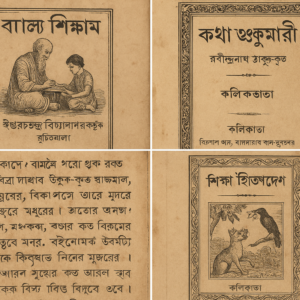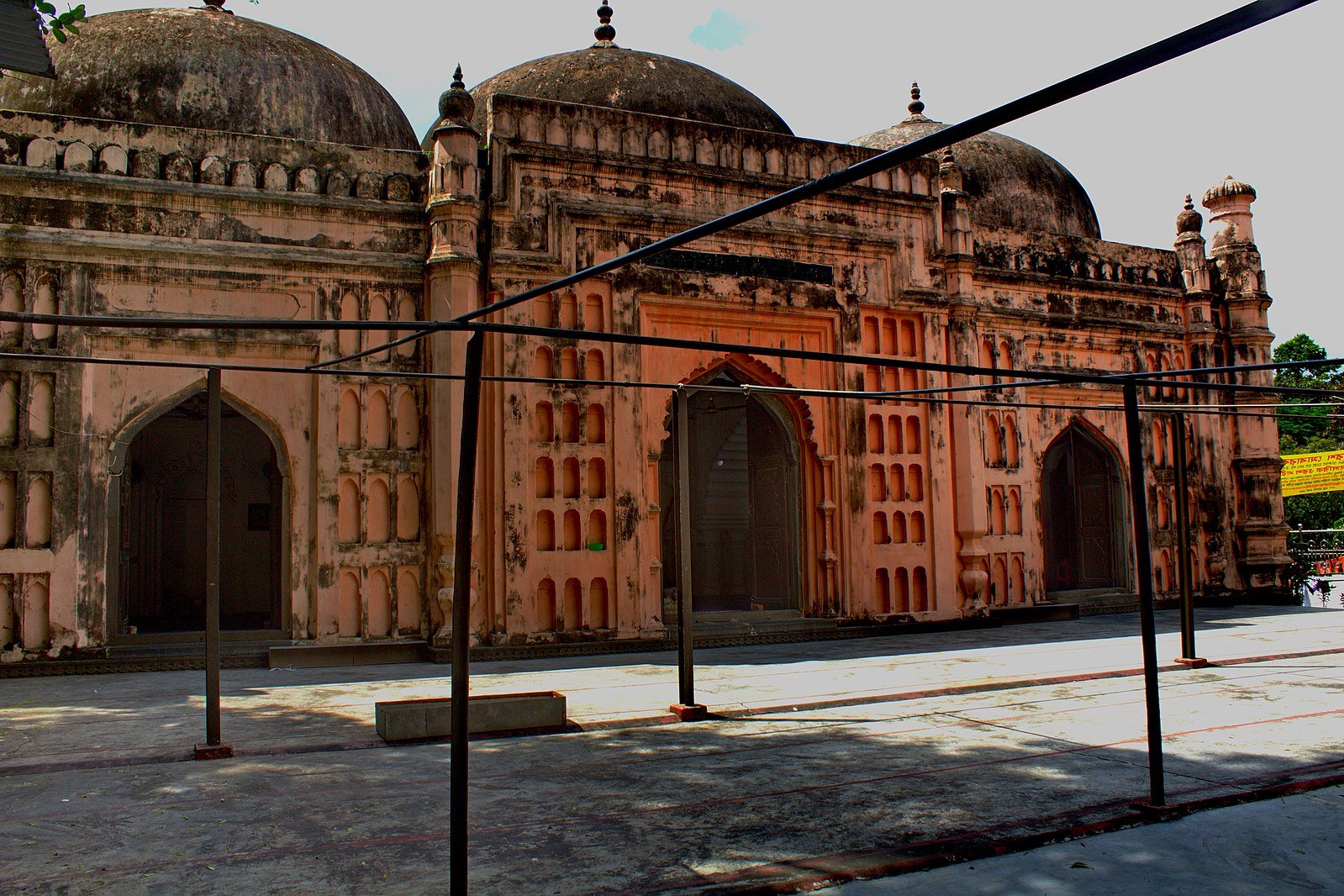Children’s Literature in Bangladesh: Nurturing Young Minds or Playing It Safe?

Tales That Teach or Tales That Tame?
Children’s literature in Bangladesh has long been a mirror reflecting the nation’s cultural, educational, and societal values. From the didactic tales of the 19th century to the vibrant, inclusive narratives of today, these stories have played a pivotal role in shaping young minds. However, the journey has not been without challenges. While strides have been made towards inclusivity and creativity, concerns about censorship and cultural conservatism persist. This article delves into the evolution of Bangladeshi children’s literature, examining its historical roots, contemporary developments, and the ongoing debate between fostering open-mindedness and adhering to traditional norms.
Historical Foundations: From Moral Lessons to Imaginative Tales
The genesis of children’s literature in Bangladesh can be traced back to the early 19th century, a time when storytelling was primarily a tool for education rather than pure entertainment. One of the earliest notable works is Nitikotha (1818), a collection of eighteen didactic stories intended mainly as textbooks to impart moral lessons to young readers rather than to amuse them.
This trend of moralistic storytelling was further carried forward by prominent figures like Iswar Chandra Vidyasagar, Akshay Kumar Datta, and Madanmohan Tarkalankar. Their contributions focused heavily on shaping young minds through lessons in ethics, discipline, and social responsibility. The literature of this period emphasized values such as obedience, respect for elders, and the importance of education, reflecting the socio-political needs of a society undergoing colonial and cultural transformation.

The Turn Towards Imagination
A transformative shift in Bengali children’s literature came with the advent of Rabindranath Tagore. Recognizing the limitations of strictly didactic tales, Tagore infused his children’s writings with elements of fantasy, nature, and lyrical beauty, offering young readers an imaginative escape alongside subtle moral teachings. His works like Khela (The Play), Sishu (The Child), and Kheya (The Ferry) blurred the line between children’s poetry and stories, inviting readers into a world of wonder and introspection.
Parallel to Tagore’s contributions, other literary giants also shaped this evolving landscape. Upendrakishore Ray Chowdhury, celebrated for his mastery of storytelling and illustration, created timeless tales that blended humor, adventure, and scientific curiosity. His magazine Sandesh, launched in 1913, became a significant platform for innovative children’s writing.
Sukumar Ray, Upendrakishore’s son, further revolutionized children’s literature with his unparalleled nonsense rhymes and whimsical imagination, best showcased in his legendary work Abol Tabol (1923). His playful use of language and absurdist humor was groundbreaking, making children’s literature truly enjoyable for the first time.
Dakshinaranjan Mitra Majumder deserves special mention for his crucial role in preserving Bengali folklore through his collection Thakurmar Jhuli (1907), a beloved anthology of fairy tales, myths, and legends that remains a cornerstone of Bengali children’s literature. This work not only celebrated the oral storytelling traditions of rural Bengal but also cemented a cultural identity that young readers could relate to and take pride in.
The rich illustrations and lyrical prose of Thakurmar Jhuli captivated generations, offering a world where talking animals, clever heroes, and wise old grandmothers sparked the imagination of young minds.
Legacy and Influence
The early pioneers of children’s literature in Bengal—both from today’s Bangladesh and West Bengal—set the foundation for a dynamic literary tradition. Their works emphasized that children’s books could be more than just vehicles for moral instruction; they could also be avenues for creativity, self-expression, and joy. This legacy continues to influence contemporary children’s literature in Bangladesh, where the tension between nurturing free-thinking individuals and reinforcing social norms persists even today.
Institutional Contributions: Nurturing Young Readers
In post-independence Bangladesh, children’s literature began to flourish more systematically. These organizations have not only published a wide range of literary content tailored to young minds but have also created platforms that promote creativity, inclusivity, and a reading culture among children.
Bangladesh Shishu Academy
Founded in 1976, the Bangladesh Shishu Academy has been a cornerstone of children’s literary development in the country. The institution has published over 400 books for children across genres—poems, rhymes, stories, science books, novels, plays, and even autobiographies—making it one of the most prolific contributors to the nation’s youth literary space.
One of its most significant achievements is the Shishu Bishwakosh, a five-volume children’s encyclopedia that aimed to expand general knowledge among children in an age-appropriate format. Beyond publications, the Academy also plays an important cultural role through its monthly magazine “Shishu”, which has been in continuous publication for over 25 years. The magazine serves as a vital platform for emerging young writers and illustrators, encouraging self-expression and storytelling from an early age.
Moreover, the Academy regularly organizes literary competitions, book fairs, and workshops aimed at nurturing budding writers and readers, ensuring that children’s literature remains a living, evolving field rather than a static tradition.
Bangla Academy
Another major player in promoting children’s literature is the Bangla Academy, which has made invaluable contributions by publishing over a hundred children’s books, including original works and translations. These publications span a wide spectrum of genres—nursery rhymes, science fiction, folk tales, history, and even illustrated poetry—helping to make reading more engaging and educational for children.
Notably, the Bangla Academy’s curated collection also includes books that educate young readers about the Liberation War, language movement, and scientific achievements, helping to ground them in Bangladesh’s history and cultural identity from an early age.
Through regular participation in Ekushey Boi Mela (the annual book fair), the Academy makes these books widely available, helping to normalize children’s book buying as part of family reading culture. Its focused publications during International Mother Language Day and Children’s Day further reinforce the institution’s long-term commitment to nurturing literary consciousness among the youth.
Private Publishers: Diversifying the Landscape
While public institutions laid the groundwork, private publishers have brought energy, innovation, and diversity into the children’s book market in recent years. By focusing on visual storytelling, multilingual content, and culturally nuanced narratives, these publishers have helped broaden the scope and appeal of children’s literature in Bangladesh.
Sheba Prokashoni
Established in 1963 by Qazi Anwar Hussain, Sheba Prokashoni initially focused on thrillers like the Masud Rana series but soon became instrumental in introducing Western classics to young Bangladeshi readers. With simplified Bangla translations of The Three Musketeers, Robinson Crusoe, Treasure Island, and more, Sheba made global literature accessible and exciting to teenagers and young adults in Bangladesh.
Though targeted more at older children and teens, Sheba’s influence in creating a reading habit among youth remains undeniable. It opened doors to global literary culture, especially for readers from middle- and lower-middle-class families.
Mayurpankhi
Founded in 2014, Mayurpankhi is a publishing house that has redefined children’s books through bilingual picture books and visually rich storytelling. The company has released over 130 titles in Bengali and English, covering a wide range of themes including friendship, nature, imagination, and heritage. What sets Mayurpankhi apart is its inclusivity—it has also published books in indigenous languages such as Chakma, Marma, and Tripura, a move that has been praised for promoting cultural representation in mainstream children’s literature.
By embracing diverse voices and local illustrators, Mayurpankhi books resonate with young readers who rarely see themselves represented in typical urban-centered storylines. This commitment to identity and visibility is shaping a more inclusive literary culture for future generations.
Ikri Mikri
Launched in 2016, Ikri Mikri is another fresh and bold name in the Bangladeshi children’s literature scene. In a short span, it has published nearly 70 books, focusing on original Bangladeshi stories, contemporary themes, and homegrown artists and writers. Ikri Mikri’s mission centers around storytelling that reflects the real-life experiences and emotions of Bangladeshi children—from dealing with sibling rivalry to the joy of village fairs.
Its publications often feature unconventional characters, rich illustrations, and topics like environmentalism, empathy, and gender sensitivity—subjects that many traditional publishers still shy away from. This forward-thinking approach is crucial in developing a more emotionally intelligent and socially aware generation of readers.
Contemporary Trends: Embracing Diversity and Representation
Children’s literature in Bangladesh has entered a transformative era—one that prioritizes representation, inclusivity, and cultural nuance. No longer limited to moralistic tales or folklore alone, modern books for children now feature a spectrum of identities, perspectives, and lived realities. This shift mirrors a broader global trend, where storytelling is used not just to entertain or instruct, but to validate diverse childhood experiences and foster emotional intelligence.
Breaking Stereotypes and Expanding Horizons
Historically, many children’s books in Bangladesh featured characters from a homogenous background, often reflecting urban, middle-class, or ethnically Bengali identities. Today’s literature, however, actively seeks to dismantle such narrow representations. Contemporary books now showcase children of different skin tones, ethnicities, family structures, and abilities, allowing young readers across the country to see themselves in the pages they turn.
This movement is particularly significant in a country as diverse as Bangladesh, home to more than 45 indigenous communities alongside a majority Bengali population. The rise in inclusive storytelling enables literature to serve as a mirror for some and a window for others—fostering empathy and respect for difference.
Mayurpankhi: Stories That Reflect Today’s Bangladesh
Mayurpankhi, a pioneering children’s book publisher established in 2014, has taken the lead in publishing stories that highlight modern Bangladeshi realities. Known for its high-quality, bilingual picture books, Mayurpankhi has released over 130 titles in Bangla, English, and indigenous languages like Chakma, Marma, and Tripura. This multilingual approach not only broadens access but also promotes cultural preservation through storytelling.
One standout example is Babuibela by Reesham Shahab Tirtho, which tells a tender tale of fatherhood from a child’s perspective. With evocative illustrations and a narrative that resonates emotionally, the book has been praised for portraying a loving and hands-on father figure—a refreshing deviation from traditional gender roles in Bangladeshi literature.
Through stories like Babuibela, Mayurpankhi challenges social stereotypes while fostering warmth, understanding, and emotional connection across generations.
Ikri Mikri: A Voice for the Underrepresented
Since its inception in 2016, Ikri Mikri has embraced bold and imaginative narratives that push beyond conventional themes. Their books are celebrated for incorporating contemporary issues like environmentalism, mental health, gender sensitivity, and the complexities of growing up in a rapidly changing society.
What distinguishes Ikri Mikri is its unwavering commitment to homegrown stories and illustrators, making sure the voice and visual tone remain authentically Bangladeshi. Many of its books feature protagonists from rural areas, indigenous groups, or lower-income households—populations that have historically been invisible in mainstream children’s books.
For example, stories may include:
- A girl who dreams of becoming a scientist despite societal expectations
- A child who helps save their village from plastic pollution
- A tale about the joys and struggles of celebrating traditional festivals in the hills
These narratives not only provide representation for marginalized communities, but also teach children from other backgrounds about solidarity, difference, and shared values.
Changing Visual Norms
Representation in children’s literature is not limited to words alone. Visual storytelling—through illustrations, color palettes, and character design—plays a powerful role in shaping a child’s understanding of beauty, normalcy, and identity. Publishers like Mayurpankhi and Ikri Mikri have actively moved away from Eurocentric illustration styles and standardized beauty ideals.
Books now feature:
- Darker skin tones, curly hair, and indigenous facial features
- Children wearing local clothing, including tribal dress or modest rural attire
- Everyday scenes like rickshaw rides, street cricket, or riverside picnics
These details may seem small, but they contribute to a larger movement that validates diverse lives and grounds literature in the visual culture of Bangladesh.
Why Representation Matters
According to educational research, children begin forming ideas about race, class, and gender from as early as three years old. Books that reflect a broad spectrum of identities help dismantle harmful stereotypes, build self-confidence, and encourage inclusion.
Moreover, when children from underrepresented groups see themselves positively depicted in stories, it boosts their sense of belonging and academic engagement. And for children from more privileged backgrounds, diverse books cultivate empathy, awareness, and cross-cultural understanding—critical skills for navigating a pluralistic society.
Looking Ahead: The Road to Wider Accessibility
While the progress in diversity and representation is noteworthy, accessibility remains a challenge. Many inclusive books are still limited to urban bookstores or published in small print runs. Organizations and publishers must now work to ensure these stories reach rural schools, libraries, and underserved communities.
Collaborations with NGOs, mobile libraries, and digital platforms like Boitoi or ShobdoKoli can help bridge this gap, making inclusive children’s literature more equitable and far-reaching.
Challenges: Censorship and Cultural Conservatism
While the evolution of children’s literature in Bangladesh reflects progress in imagination, diversity, and cultural representation, this growth has not been without friction and constraints. Censorship and cultural conservatism continue to pose significant challenges, shaping both what is published and how stories are told. These challenges reflect ongoing tensions between creative freedom, educational goals, and prevailing social norms.

Textbook Revisions: Reinforcing Old Norms?
One of the most contested areas of children’s content is within school textbooks, which are overseen and distributed by the National Curriculum and Textbook Board (NCTB). As the primary source of reading for millions of students, textbooks play a crucial role in shaping young minds. However, recent revisions have raised concerns over gender representation and ideological influence.
In January 2025, controversy erupted over the revised versions of primary school textbooks, particularly for classes 1 to 5. A line that originally portrayed a boy helping with household chores was changed to show a girl performing the same task. This seemingly minor edit sparked nationwide debate, with many educators, writers, and activists accusing the NCTB of perpetuating traditional gender roles.
The Bangladesh Mahila Parishad, a leading women’s rights organization, voiced its deep concern, arguing that such textbook alterations undermine decades of advocacy for gender equality in education. They stressed that children, especially boys, must see positive portrayals of shared domestic responsibility to challenge patriarchal attitudes from an early age.
Educators and researchers also questioned why inclusive language and character diversity were rolled back. For a country striving to align with SDG 4 (Quality Education) and SDG 5 (Gender Equality), such regressive textbook edits are seen as contradictory to national commitments.
Literary Bans: Navigating Societal Sensitivities
The constraints on children’s literature go beyond schoolbooks. In some cases, works intended for young adult or crossover audiences have faced outright government bans due to their sensitive subject matter.
A notable example is the 2020 ban of the novel Bishfora (Carbuncle) by Saiful Baten Tito, a work that confronted the issue of sexual abuse in madrassas. Though the novel was targeted primarily at older adolescents and adults, its social relevance and disturbing realism made it a topic of national discussion. The government justified the ban on the grounds of offending religious sentiments and posing a threat to public order.
Human rights groups and literary activists decried the move as a form of institutional censorship, pointing out that silencing such narratives does little to protect children and instead perpetuates a culture of secrecy and denial around abuse. The banning of Bishfora highlighted the fine line authors must walk in Bangladesh—balancing social critique with cultural and political sensitivities.
This incident underscored a broader problem: while literature can and should be a vehicle for addressing real-world issues, the space to do so in Bangladesh remains fragile and often conditional.
Pressure on Publishers and Writers
Authors and publishers working in the children’s literature space have also faced informal pressures to self-censor, particularly when dealing with themes like:
- Gender fluidity or nonconforming identities
- Religious critique or reinterpretation
- Political history outside mainstream narratives
- Family structures that deviate from the norm
While direct government censorship is relatively rare, the fear of backlash—from parents, school authorities, or religious groups—often leads to preemptive edits or the shelving of entire manuscripts. As a result, some authors avoid these “sensitive” topics altogether, even when they are highly relevant to the lives of Bangladeshi children and teenagers.
While there’s a growing demand for progressive themes in urban markets, rural areas often dictate stricter content guidelines, driven by conservative community norms and fear of controversy.
A Balancing Act: Cultural Context vs. Creative Freedom
The challenges faced by writers, illustrators, and publishers in Bangladesh reflect a larger societal dilemma: how to honor cultural values while expanding the boundaries of children’s literature. Balancing tradition with progress requires not just creative ingenuity but also policy-level support and civic education.
International frameworks, such as the UN Convention on the Rights of the Child, emphasize a child’s right to freedom of expression and access to diverse information —rights that must be safeguarded even within conservative contexts.
The Way Forward: Balancing Creativity and Cultural Values
To foster a vibrant and inclusive children’s literary landscape, Bangladesh must navigate the fine line between nurturing creativity and respecting cultural values.
- Encouraging Diverse Narratives: Publishers and authors should continue to explore stories that reflect the diverse experiences of Bangladeshi children, including those from marginalized communities.
- Promoting Critical Thinking: Literature that encourages critical thinking and challenges stereotypes can empower children to question societal norms and develop independent thought.
- Ensuring Accessibility: Efforts should be made to make quality children’s literature accessible to all, regardless of socio-economic status, through affordable pricing and distribution in various languages.
Want to dive deeper into how media shapes young minds? Check out “Prioritize Healthy Content, Combat Unhealthy Entertainment” — a thought-provoking piece that explores why what children watch and read truly matters.







